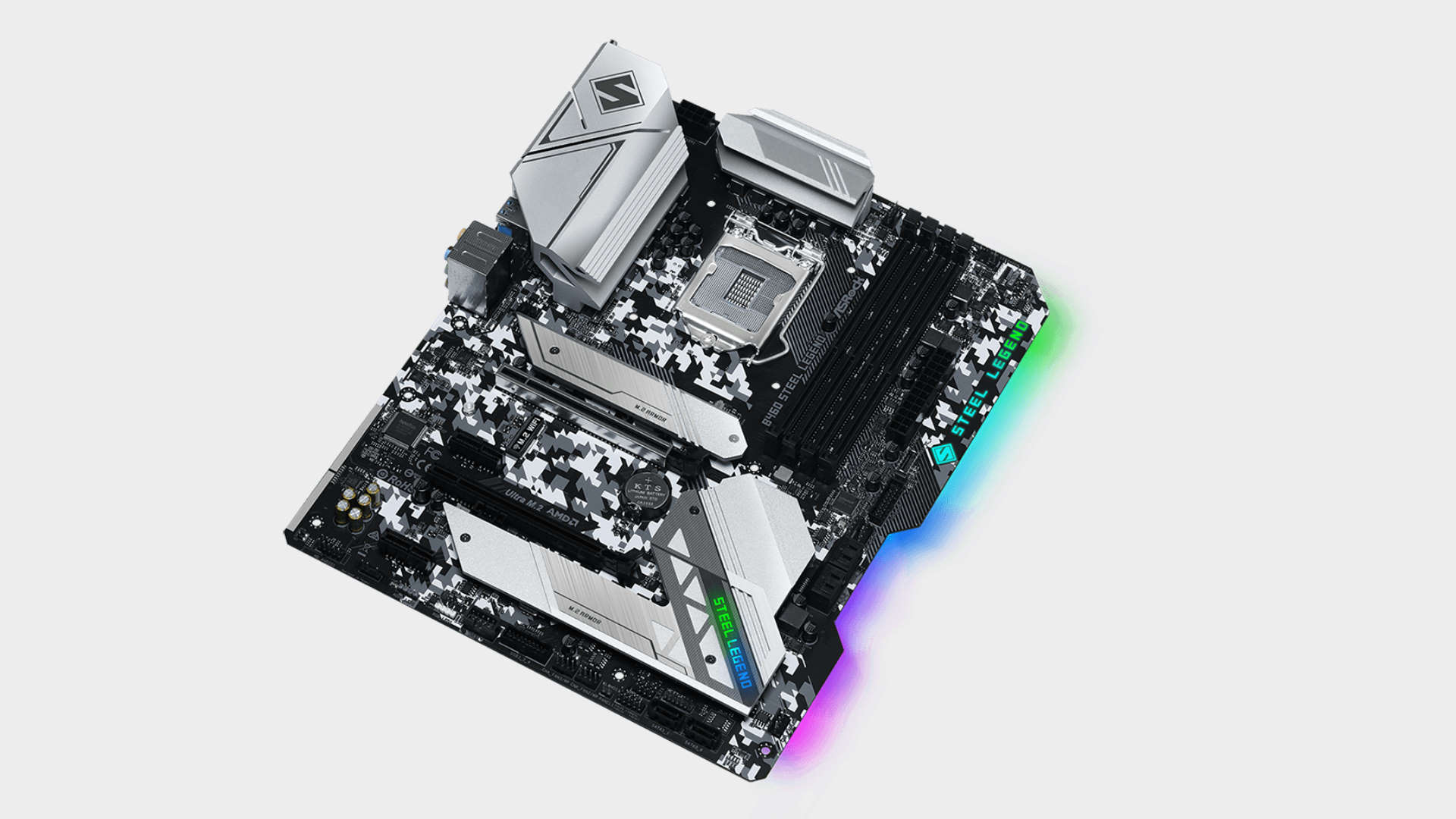Our Verdict
The ASRock B460 Steel Legend has an attractive feature list that should strongly appeal to a user that has no need for Wi-Fi.
For
- Quality VRM
- Good value for money
- Strong performance
Against
- No Wi-FI
- B460 memory limitations
PC Gamer's got your back
If the pricing of the best Z490 motherboards left you in shock, then you’ll probably want to check out motherboards equipped with this more affordable B460 chipset. They might not have the bells and whistles of a $500+ Z490 board, but at least they don’t cost one of your vital organs. The ASRock B460 Steel Legend is one such affordable, yet still reasonably equipped B460 motherboard. If you don’t care about overclocking or running super-fast DDR4 memory, then a B460 board is well worth a look.
Socket - LGA1200
Chipset - B460
Size - ATX
CPU support - Intel 10th Gen Core, Pentium, and Celeron
Memory - 4x DIMM, up to DDR4-2933 (i7,i9) or DDR4-2666 (i5)
Storage - 2x M.2, 6x SATA 6Gbps
Rear USB - 4x USB 3.2, 2x USB 2.0
Video ports - 1x HDMI, 1x DisplayPort
Network - Realtek 2.5Gb LAN
The ASRock B460 Steel Legend is an awesomely named mid-range B460 entry. At $120 USD it’s what we’d call a mid-range B460 board. A look over the specs indicate that your $120 is well spent on some important areas. You get a pair of heatsink covered M.2 slots, an e-key M.2 slot for an optional Wi-Fi card, a front USB Type-C header and a good helping of RGB onboard, plus an additional two RGB headers and two ARGB headers.
We count a total of six fan headers spread around the board. The PCB's urban camo silk screening is a bit tacky perhaps, but the heatsinks have a nice matt finish. Very solid. Metal! And, as you can see at a glance, it’s one of very few motherboards that isn’t just a plain rectangle.
The increased power demands of 10th generation CPUs means motherboards generally have to include improved VRM designs, and on that front the B460 Steel Legend is very well equipped. It includes a 9+1 phase VRM powered by a single 8-Pin EPS connector. Each stage can deliver up to 60A. Bear in mind that overclocking is not allowed on B460 motherboards, so the VRM will not see extreme loads like you might get with an all core overclocked Intel Core i9 10900K.
Not that many users would logically pair a B460 board with a 10900K, but then nobody wants their board to turn into an aromatic smoke fest. It’s better to be safe than sorry. As we're using an Intel Core i5 10600K sadly we are limited to DDR4-2666, while Core i7 and i9 processors will support DDR4-2933. Come on Intel we understand you really want folks to buy a Z490 board but, that’s just *expletive deleted*.
The rear I/O is inevitably on the basic side. We’d ideally like to see more than six USB ports, once you add a keyboard and mouse, you’re already two down. Add a printer, there’s another, then an external hard drive and you’re left with two ports. We’re really pleased to see 2.5G Ethernet trickle down to the lower end of the market. Gigabit belongs in 1999. Sadly there’s no Wi-Fi present but we can live with that. You can’t expect too much on a $120 board.
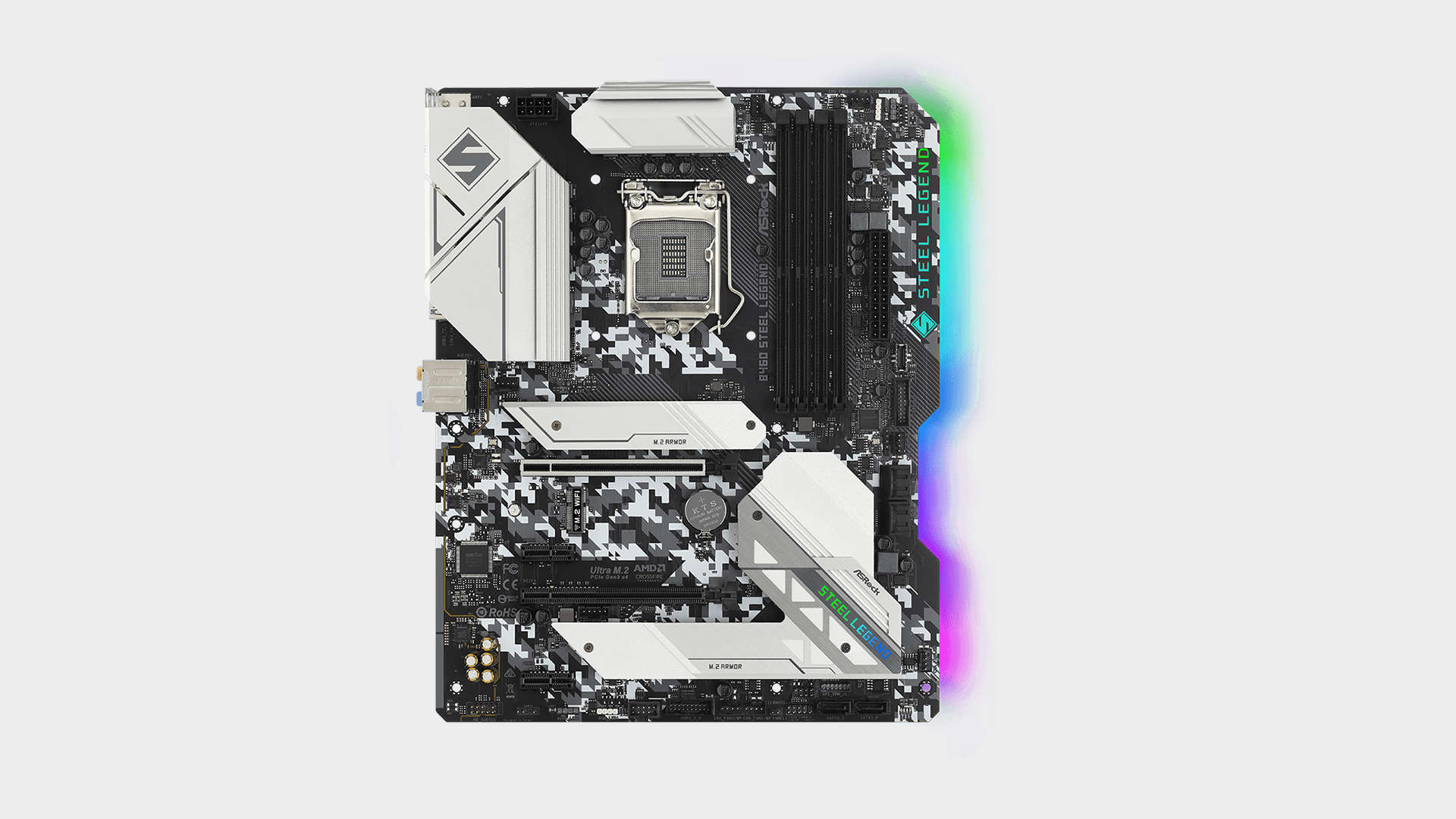
Gaming performance
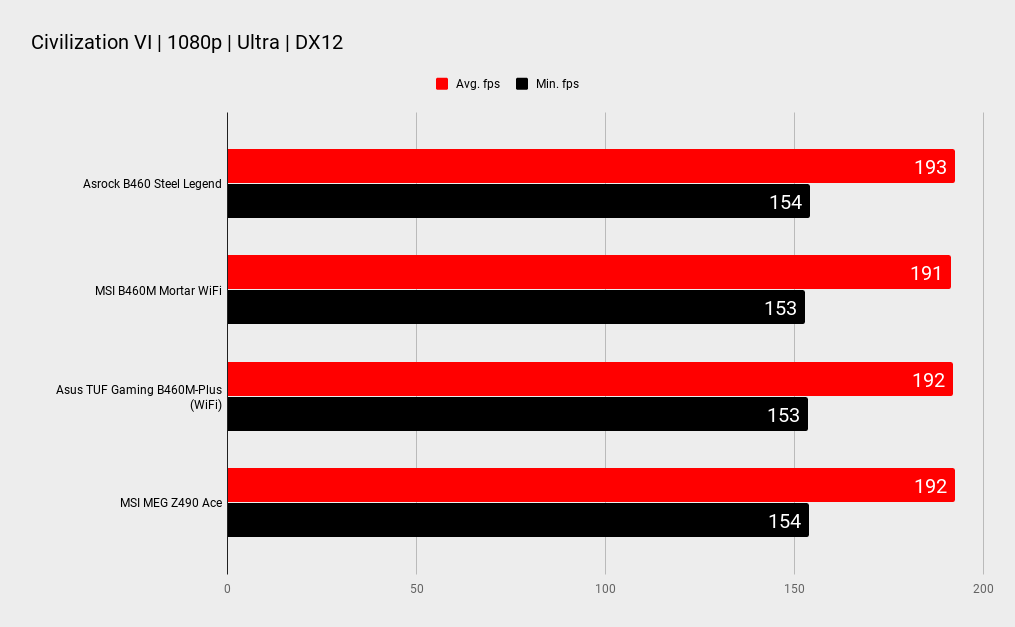
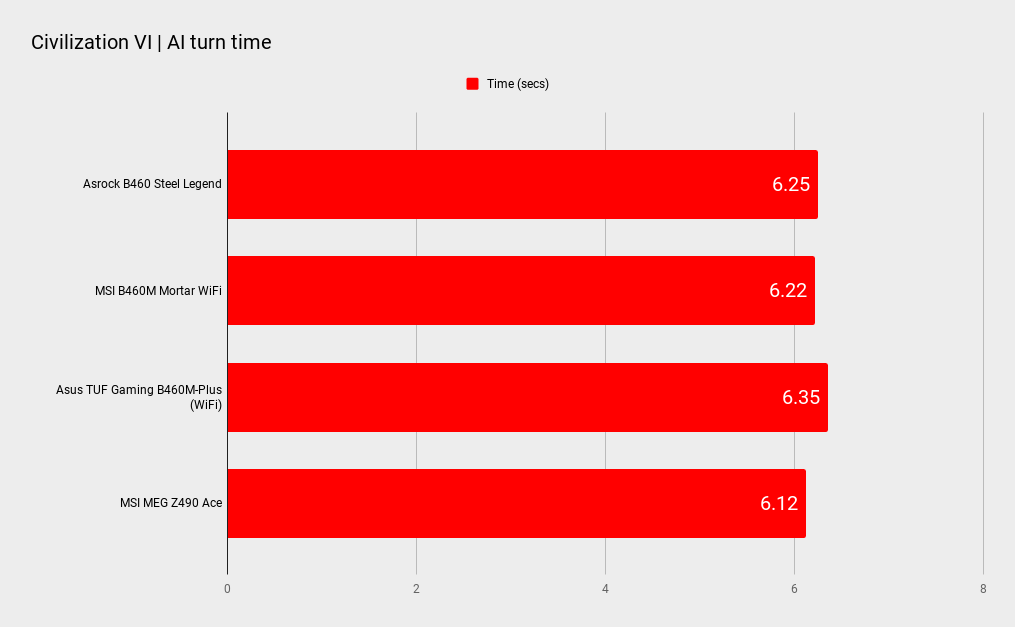
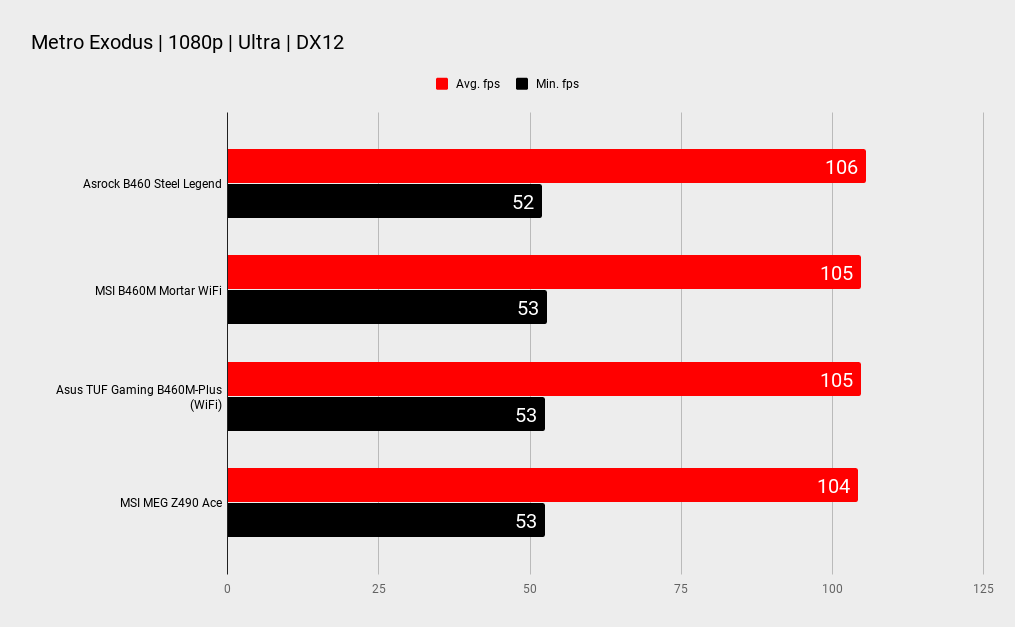

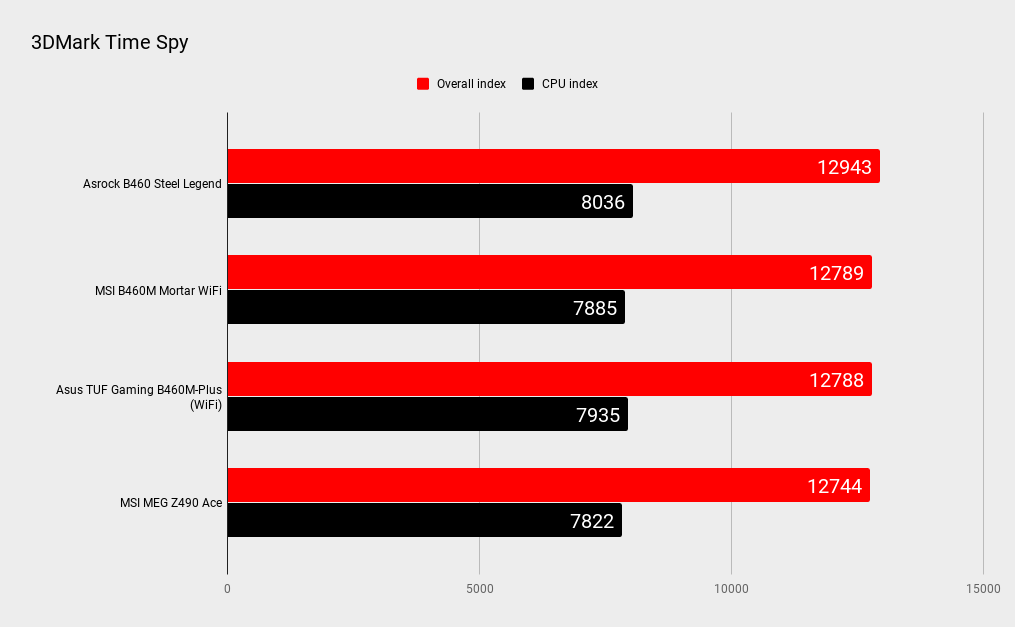
Motherboard performance
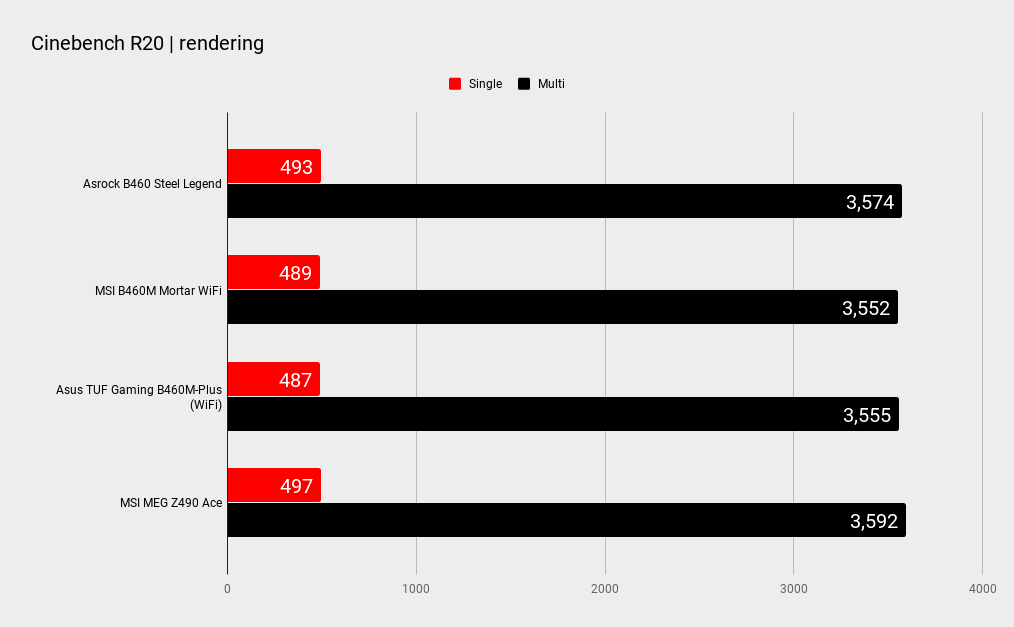
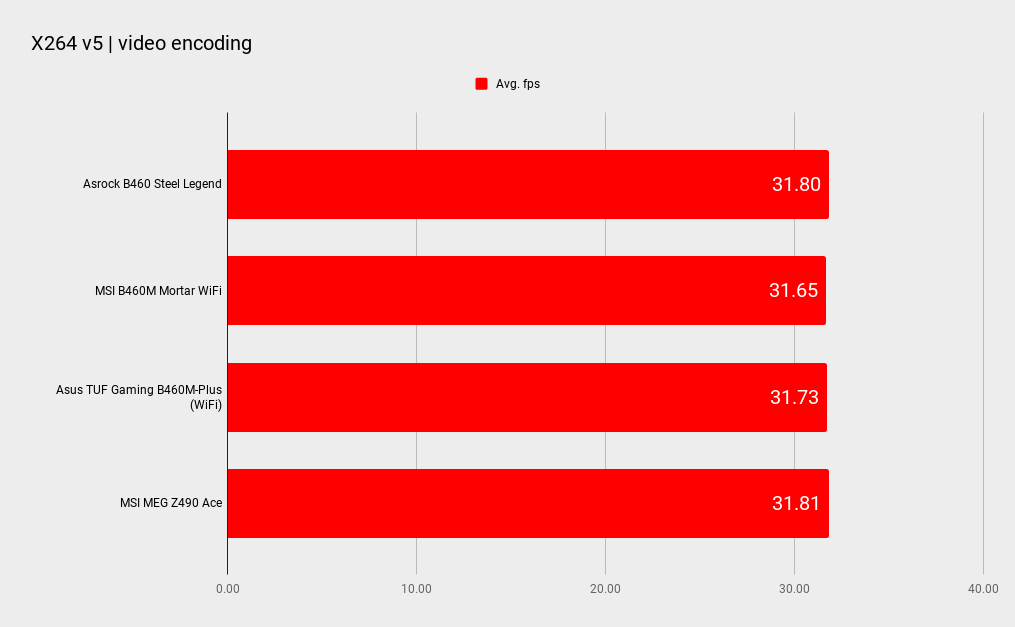
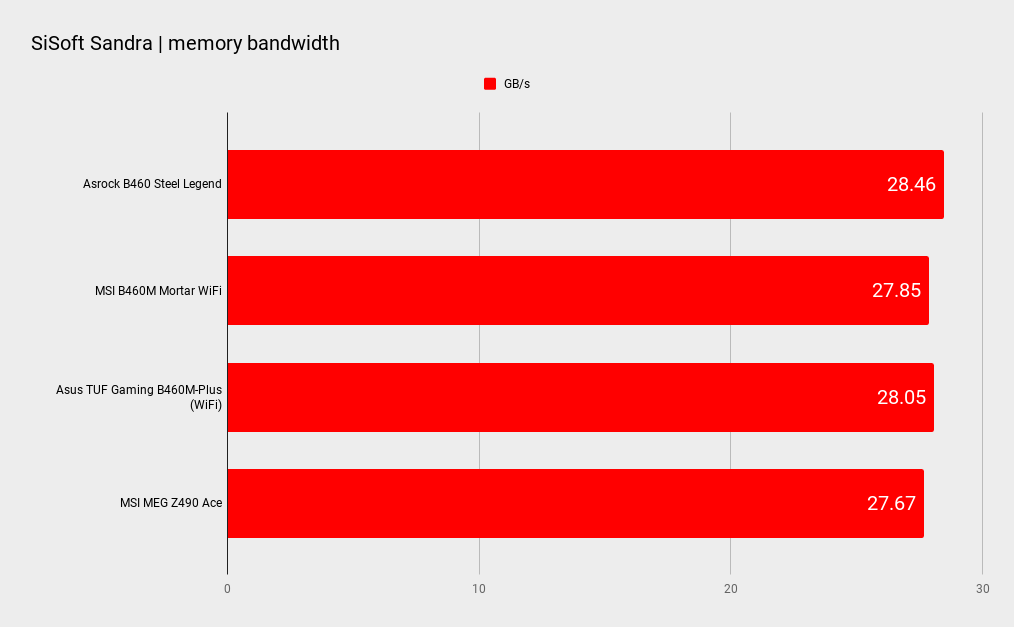
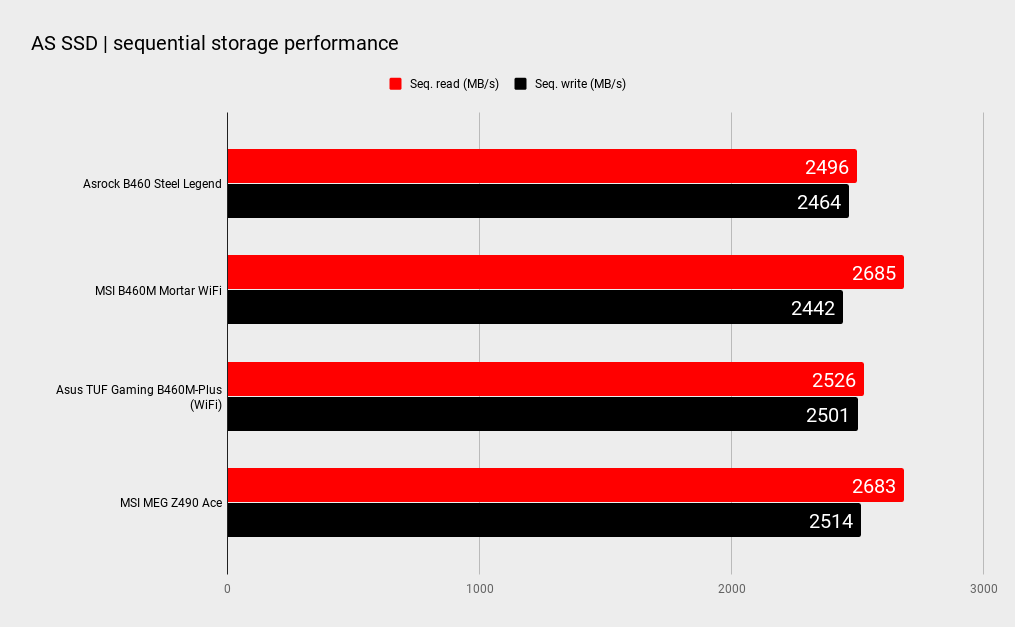
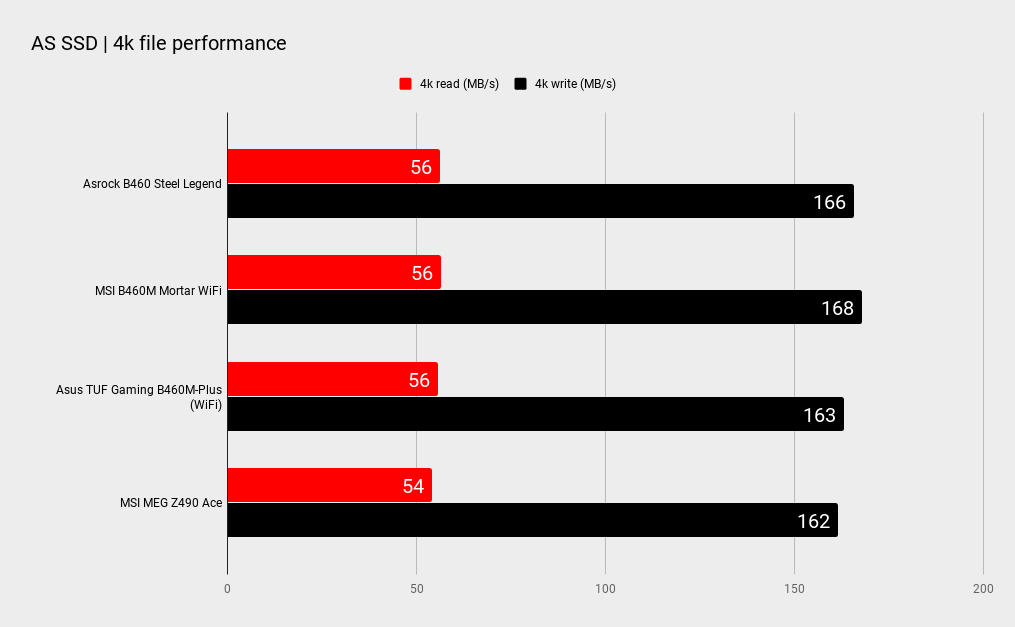
CPU - Intel Core i5-10600K
Graphics - Nvidia GeForce RTX 2080 TI FE
Memory - 16GB G.Skill Flare @2,666MHz CL14
Storage - 1TB Samsung 970 EVO, 1TB 970 Pro SSD
PSU - Antec HCP-1200W
Cooling - NZXT Kraken X73 360mm AIO
To test performance, we compared the B460 Steel Legend to the excellent MSI MAG B460M Mortar WiFi and the Asus TUF B460M Gaming WiFi. We threw in the MSI MEG Z490 Ace with its memory set to DDR4-2666 as well to get a feel for relative performance between the new Intel chipsets. The ASRock performed particularly well. Overall it’s the fastest of the B460 boards, impressing in benchmarks that respond well to higher bandwidth. The Steel Legend (seriously, what a boss name) applies aggressive memory subtimings when they are left set to auto, which goes a long way to explaining its relatively strong performance.
You can’t overclock via multiplier on a B460 motherboard, but there’s a cheeky way to overclock a 65W non K CPU. The B460 Steel legend includes a feature ASRock calls BFB or base frequency boost and Asus and MSI have adopted something similar. It allows the user to increase the power limits of a 65W processor leading to long duration base clocks which are hundreds of MHz higher than default.
We can see how it works by applying a 10600 non-K CPU’s power limits to our 10600K. Whereas the 10600K will boost to 4.5 GHz on all cores for all but the heaviest of long duration loads, a simulated 10600 will drop back to 3.9 GHz after a short period of time. So, if you’ve got a non K processor and decent cooling, by all means give it a bash. You’ll get a decent all core base clock boost gratis.
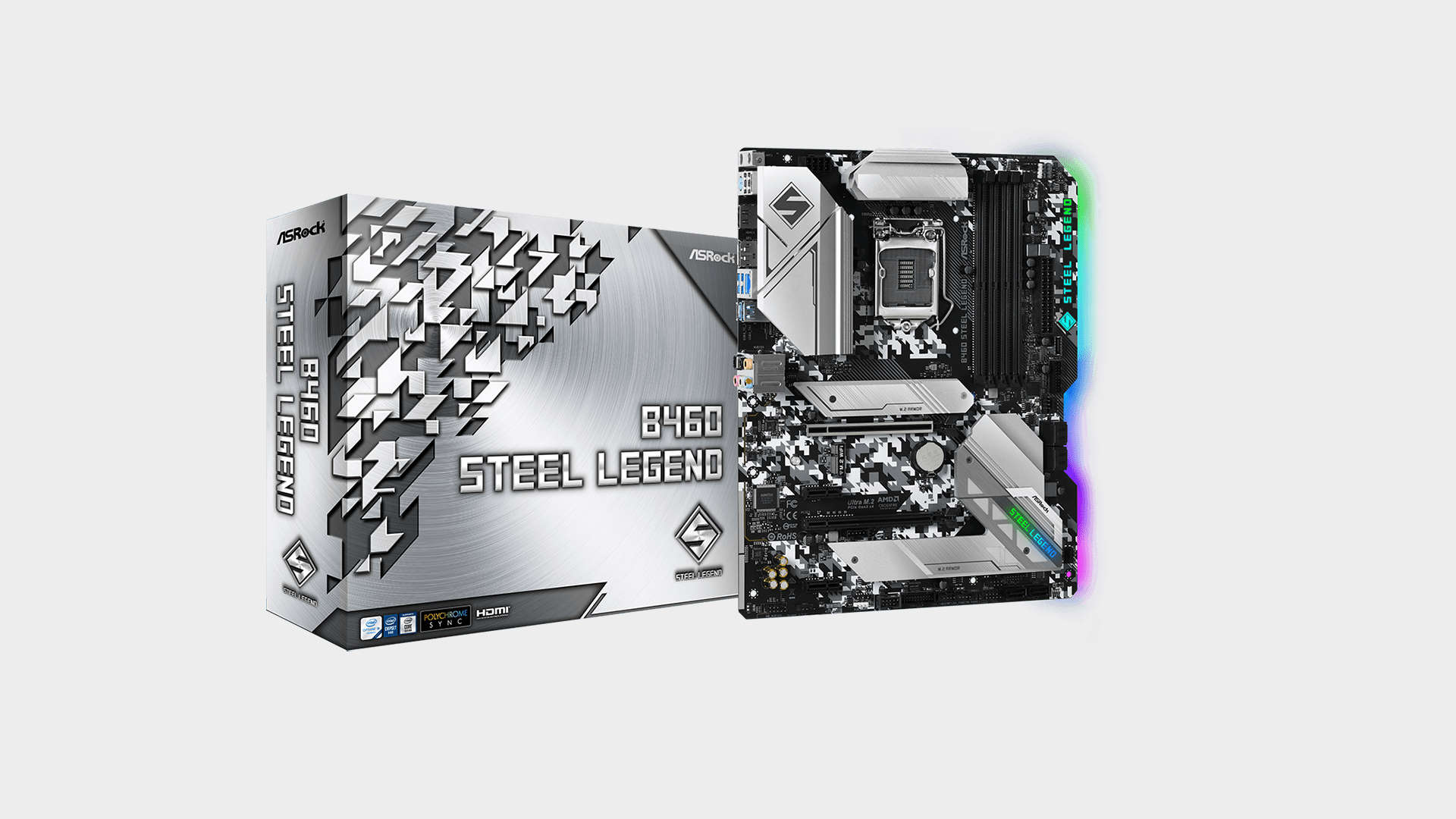
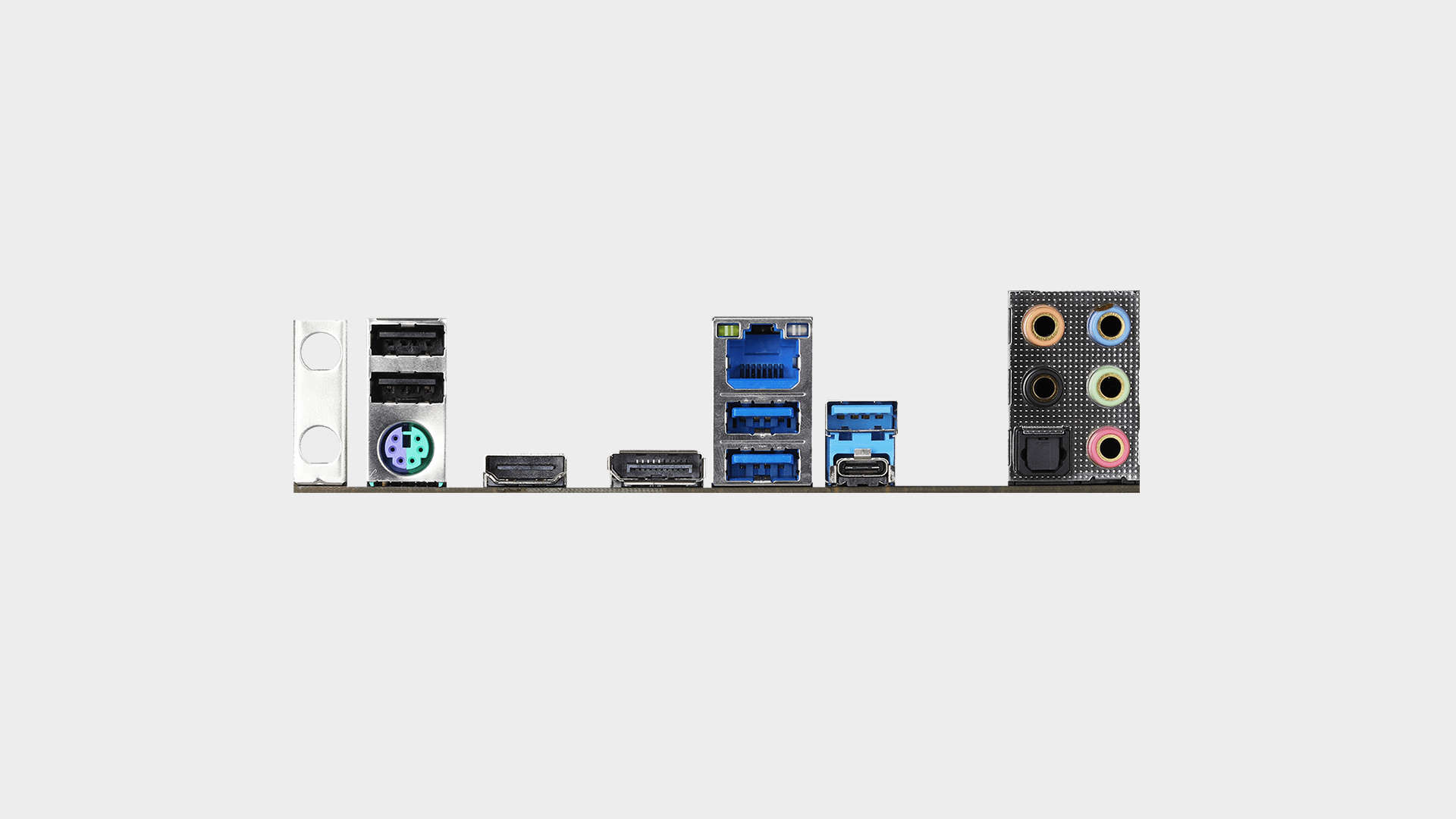
The ASRock B460 Steel legend will appeal to buyers who aren’t so interested in bells and whistles, but do want a solid ATX board that’s capable of powering any 10th Gen CPU without bursting into flames. The relative performance between this and a quality Z490 such as the MSI ACE shows that it really is just down to the feature set, overclocking, and memory support. But the base frequency boost tweak is a great option to have as well. It’s a fast board too, no thanks to the ridiculous B460 memory limitations. It might not tick every box, but at this end of the market you’re always going miss out on something.
You get a strong VRM, 2.5G Ethernet, and plenty of expandability and connectivity options. It’s a great choice of board for a budget RGB-oriented build. Integrated Wi-Fi would have been a nice cherry on top for the price, and that's arguably one of the reasons we prefer the MSI B460M Mortar. But the ASRock B460 Steel legend is still a highly competitive offering and comes highly recommended by us too. It shows its steel, one might say. If it had Wi-Fi we might even have said it was legendary.
The ASRock B460 Steel Legend has an attractive feature list that should strongly appeal to a user that has no need for Wi-Fi.

Chris' gaming experiences go back to the mid-nineties when he conned his parents into buying an 'educational PC' that was conveniently overpowered to play Doom and Tie Fighter. He developed a love of extreme overclocking that destroyed his savings despite the cheaper hardware on offer via his job at a PC store. To afford more LN2 he began moonlighting as a reviewer for VR-Zone before jumping the fence to work for MSI Australia. Since then, he's gone back to journalism, enthusiastically reviewing the latest and greatest components for PC & Tech Authority, PC Powerplay and currently Australian Personal Computer magazine and PC Gamer. Chris still puts far too many hours into Borderlands 3, always striving to become a more efficient killer.
